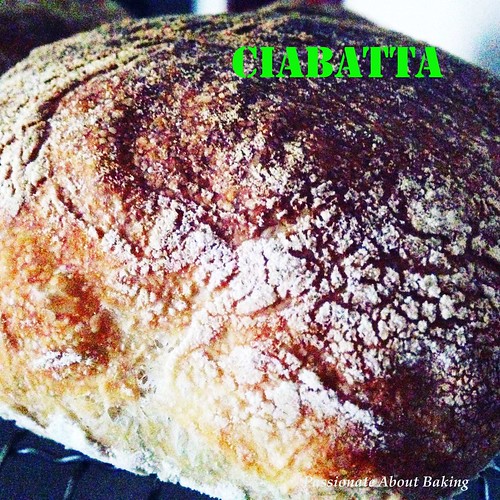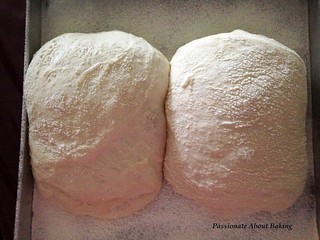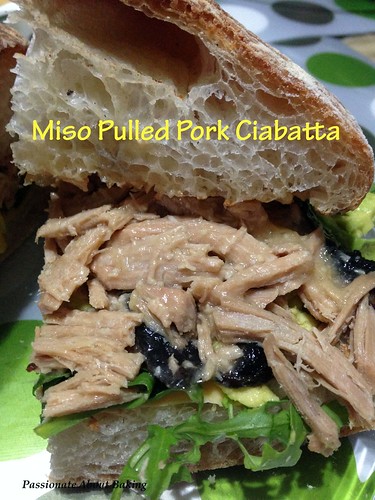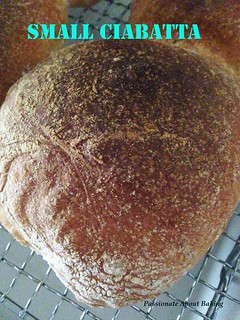
Recipe for Pain á lÁncienne Rustic Bread (Ciabatta), adapted from "artisan breads every day" by Peter Reinhart.
(Makes 3 large loaves, or 8 small loaves)
Ingredients:
567g Bread flour
4g Instant yeast
11g Salt
454g Cold water14g Olive oil
Method:
- Combine all ingredients, except oil, in a mixing bowl. Use the paddle attachment and mix on the lowest speed for 1 min. The dough should form a coarse shaggy ball. Let it rest, uncovered, for 5 mins to fully hydrate the flour.
- Drizzle olive oil over the dough. Then mix on medium-low speed for 1 min. The dough should become smoother but will still be very soft, sticky and wet.
- Use a wet scraper to transfer the dough to a clean lightly oiled bowl. Cover the bowl with plastic wrap and let the dough rest at room temperature for 10 mins.
- Transfer the dough to a lightly oiled work surface. With wet or oiled hands, reach under the front end of the dough, stretch it out, then fold it back onto the top of the dough. Do this from the back end and then from each, then flip the dough and over it into a ball.
- The dough should be significantly firmer, though still very soft and fragile. Place the dough back in the bowl, cover, and let sit at room temperature for 10 mins. Repeat this process three more times, completing all repetitions within 40 mins.
- After the final stretch and fold, immediately cover the bowl tightly and refrigerate overnight or for up to 4 days.
- On baking day: Remove the dough from the refrigerator about 2 hours before you plan to bake. Generously dust the baking tray with flour. Gently transfer the dough to a lightly floured work surface, taking care to degas it as little as possible.
- Dust the top surface of the dough with flour. Using a scraper, gently divide the dough into 3 square, taking care to degas it as little as possible.
- With floured hands, gently fold the dough in thirds, like folding a letter but without applying any pressure. Gently roll the folded dough in the dusting flour to coat it, then lift the dough and place it on the baking tray. Rest the dough seam side down on the tray.
- Let it proof at room temperature for 1 hour or when increased to 1 1/2 times its original size.
- Preheat oven to 230C with a baking stone. After 10mins, placed a pan of water into the oven and let it boil.
- Place the baking tray on the baking stone and bake at 230C with steam for 15mins. After 15mins, remove the pan with water. Rotate the pan and continue baking for at 210C for 10-12mins. The bread should puff up and the crust should be hard when tapped.
- Cool the bread on a wire rack for at least 45mins or completely before slicing.











No comments:
Post a Comment
Be free with your mind!